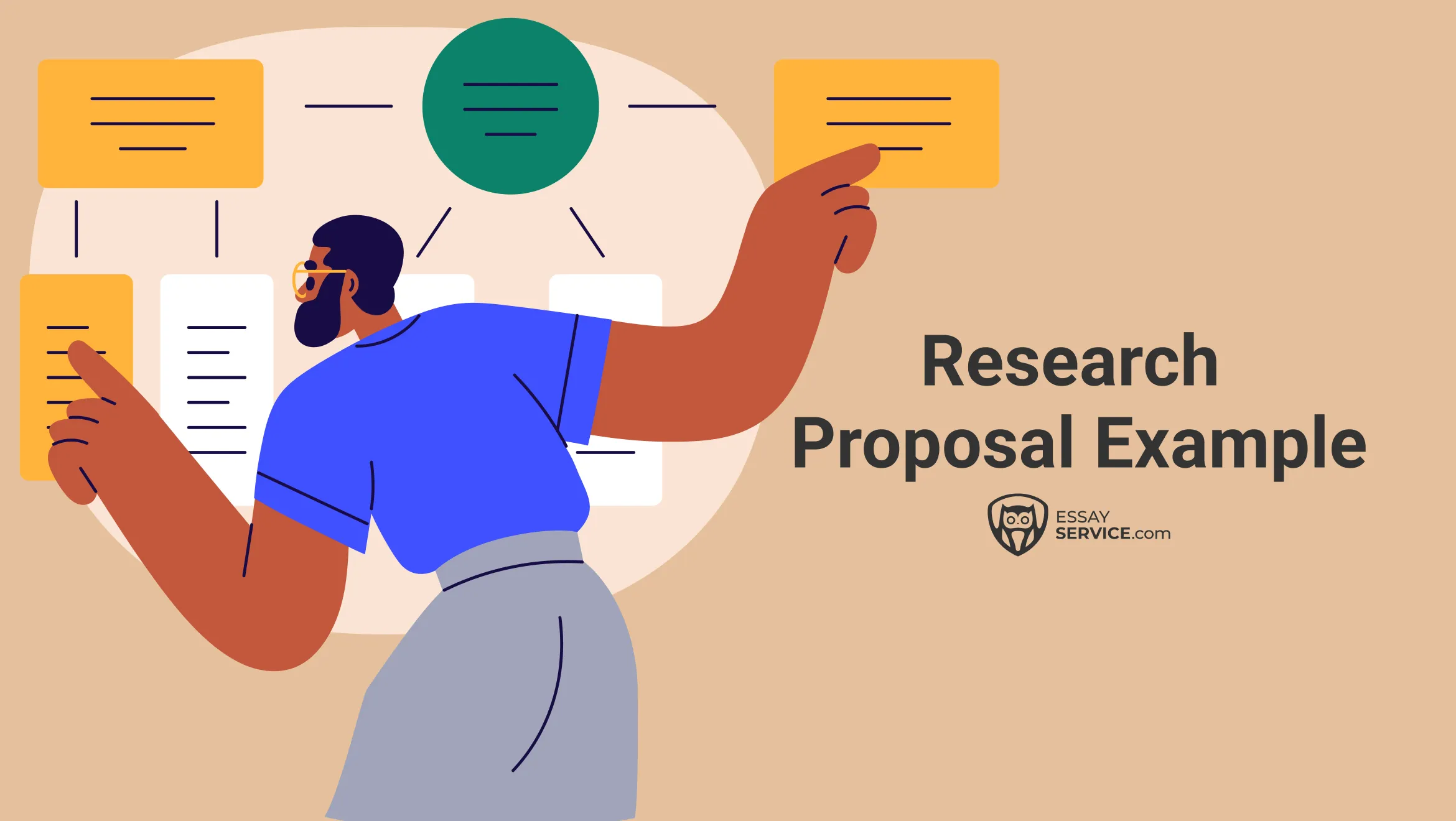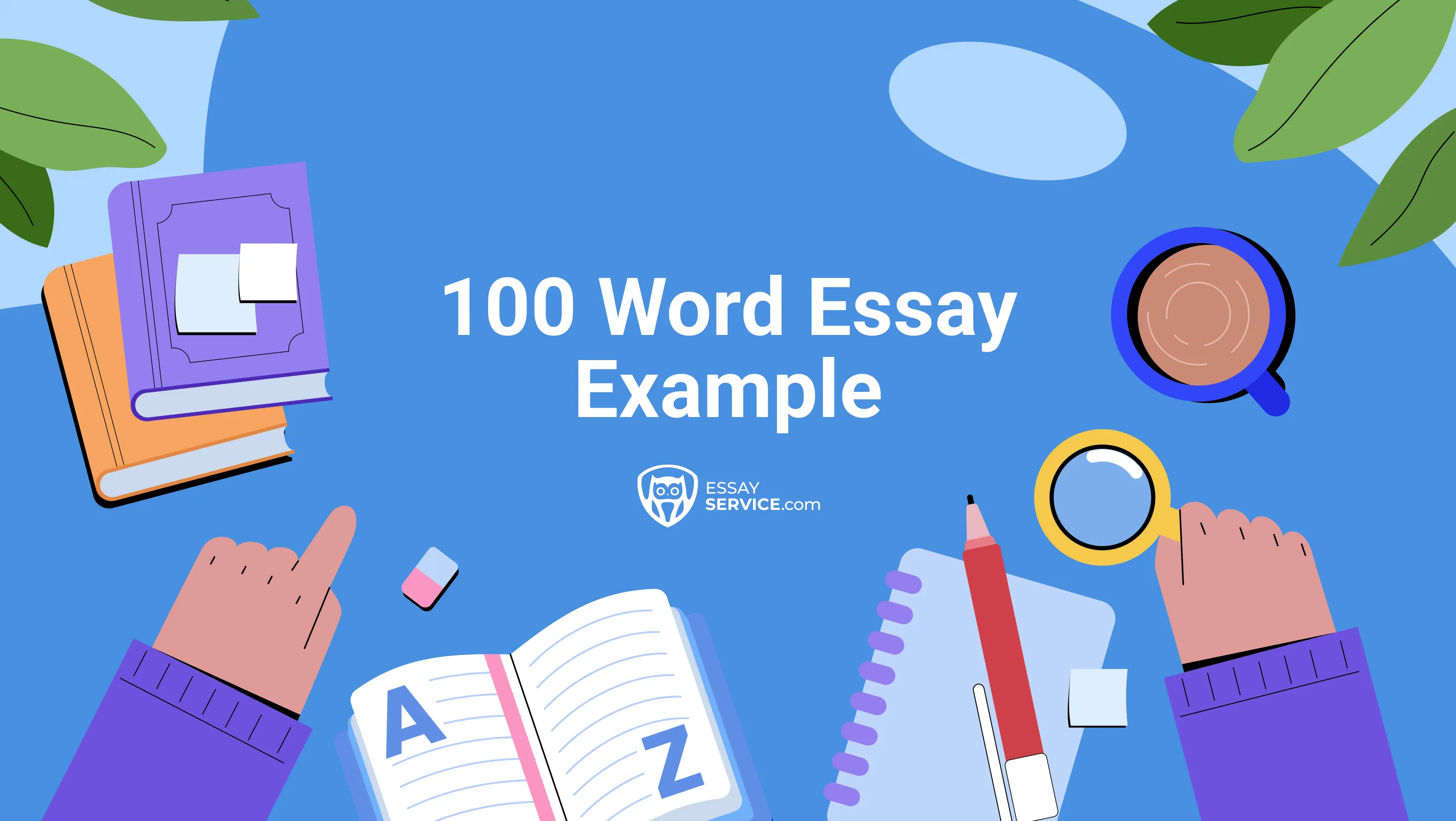Most students can explain what they want to study, but freeze when asked how they plan to study it. The format, tone, and level of detail all matter, yet few people are ever taught what a strong proposal really looks like.
This article clears that up. You’ll see free research proposal samples that turn an abstract topic into a well-supported plan.
If you’re stuck outlining or formatting your paper, EssayService can help. With expert essay service and real examples, writing a proposal becomes less about guessing and more about proving your idea can stand.

Understanding a Research Proposal
A research proposal is a formal plan that outlines what you want to study, why the topic matters, and how you intend to investigate it.
At its core, a proposal defines three things: direction, logic, and trust.
- Direction answers where you’re going: your central question or problem.
- Logic shows how you’ll get there: the design, tools, and reasoning that make your approach credible.
- And trust convinces your audience that you’ll reach an answer worth believing.
So, what is a proposal’s purpose?
- Explain what you plan to research and why it matters.
- Show how you will conduct the study through clear methods.
- Convince reviewers that your project is practical and worthwhile.
- Obtain funding for their research projects.
If you’re still looking for direction, explore these research proposal ideas. They’re not prompts to copy but sparks to ignite your own curiosity.
As we move forward, you’ll see an example of a well-written research proposal that shows how a single question can grow into a structured investigation, balancing imagination with discipline.
Research Proposal Example for Students
Seeing how each section fits together is often the clearest way to understand what makes a proposal strong. The following research proposal example PDF shows how a complete plan looks when all parts (optional and required) work in balance.
The below example research proposal consists of only the required parts. It’s written in formal academic style and can serve as a model for structure and detail.
Structure of a Research Proposal
Committees read a proposal to see whether your research project can survive friction: scarce time, limited access, competing explanations. Research proposal format varies by university, subject, and scale, yet the backbone is stable: a tight sequence that moves a reader from question to method to meaning.

Below, we’ll talk about each essential part of research proposals.
Title
A project title tells the reader what problem your proposal will solve and what means you will use. It must identify the main topic or variable, the context or group being studied, and sometimes the method or approach you plan to use.
A good title is short, usually under 15 words, and written in title case. It should give a clear sense of the problem and the subject without promising more than the research can deliver.
If your proposal is brief, the title can stand alone at the top of the first page. When your research project runs longer, especially for graduate or funded studies, add a table of contents so the reader can move easily between sections.
Introduction
Begin with what is already known, where the uncertainty lies, and why this problem is worth addressing. Mention key sources of information, but don’t only summarize literature; show what prior methods could not see.
You should also introduce the purpose of your study and the logic behind it: what the proposal will examine, what methods might help, and what kind of outcome or insight you hope to develop.
For a short university assignment, this section can stay under one page. For graduate or funded projects, two to three pages give you room to show depth without losing clarity.
Research Focus and Goals
Use recent sources to show where existing work falls short and what research questions remain unanswered. A well-defined problem should reveal both relevance and originality. If you’re unsure how detailed to be, look at our sample of research proposal again; you’ll see how strong writers identify the gap and lead the reader toward a clear purpose.
Keep this section about a page long. Shorter proposals may only need a few paragraphs, while graduate or funded ones can expand slightly. The goal is to prove that the plan fits your time, data, and methods.
Hypothesis Development (If Applicable)
Use this for quantitative proposals and experiments. The hypothesis section appears only when your research project involves measurable variables or controlled experiments. Write a single testable prediction that links your variables and implies a statistical model.
Pre-commit to the analysis window. For example, ‘We will treat p-values and 95% CIs as converging evidence, not as a pass-fail gate.’ That tells the professor you think beyond ritual thresholds.
Research Methodology
This is where you discuss methods in concrete terms: approach (qualitative, quantitative, mixed), sampling frame, instruments, analysis plan, and any experiments. Name the exact tool where possible.
- NVivo for coding interviews.
- Difference-in-differences for policy shocks.
- ITS for interrupted time series.
The section usually runs one to three pages, depending on your university’s requirements. It should read less like a description and more like a sequence of deliberate decisions that prove that your research project is both logical and feasible.
Anticipated Results or Potential Outcomes
Describe plausible patterns and what each would mean for the question. Note constraints that could bend results: seasonal effects, learning curves, access to archives, or participant fatigue.
Include a decision tree to outline how you’ll respond to different possible outcomes. If X appears, we run Y robustness check. If not, we shift to Z subgroup. That shows you can course-correct without drifting. This structure does two important things. It demonstrates that you’ve already considered uncertainty, and it proves that your research project can adapt without losing direction.
Significance
Explain why the work matters beyond your dataset. Will it adjust a model, change practice, or fix a measurement that distorts policy? Tie the contribution to a specific debate so the reader can see the fit. Name the smallest important change your study would count as success.
The goal here is to leave the reader convinced that your research deserves to exist, not because it’s clever, but because it moves knowledge forward in a measurable way, as shown in an example of a well-written research proposal above.
Timeline
Every project sounds possible in theory; the schedule shows whether it can stand the pressure of deadlines, data delays, and human energy. Turn the process into weeks.
Include approximate dates or durations:
- Months 1-2: Review literature and finalize design;
- Month 3-4: Conduct interviews;
- Month 5: Begin analysis.
Add small milestones, such as ethics clearance or progress meetings with your professor.
Budget (Required for Funded Projects)
For funded projects, this section is essential because it tells reviewers how each resource supports the study’s goals and whether the plan is financially realistic.
List equipment, software, transcription, travel, and participant payments. One line per cost with a short justification.
Include non-cash resources. Lab access, existing sensors, or a professor’s dataset reduces risk like money does. Name them.
References
List only what you cite, in the required style. Accuracy here signals how you handle evidence inside the study. Separate methodological sources from topical sources. Reviewers scan fast. This split makes rigor visible at a glance.
There’s no perfect length. Ten entries might serve an undergraduate project; a funded graduate proposal could run several pages. Every item should have earned its place because it helps the reader trace how your question grew from the work of others.
Ethical Considerations
Explain consent, confidentiality, data storage, and risk mitigation. If your methods involve deception or sensitive interviews, note debrief timing and support resources.
Additionally, a re-identification key connects participant names to their data. Your research proposal should explain who will keep that key safe and when it will be deleted to protect everyone’s privacy.
This section is usually brief, ranging from half a page to one page. Write it plainly, avoiding jargon or empty assurances.
Final Thoughts
A well-written research proposal proves you can define a question, choose the right methods, and recognize the limits of your own study. Each section, including introduction, design, results, and ethics, builds a kind of quiet confidence that reviewers can feel. The goal is to communicate that your research project is possible, purposeful, and worth supporting.
If you’re unsure where to start or how to continue, EssayService has got your back with a research proposal writing service. Our authors specialize in writing clear, structured, and polished proposals and research papers.
Frequently Asked Questions
How To Write Ethical Consideration In Research Proposal Example?
Explain how you’ll protect participants’ rights, obtain informed consent, and maintain the confidentiality of all data. You can briefly describe how you’ll store information securely and who will manage access.
Where Can I Find A Good Research Proposal Example In PDF Format?
You can view free samples and download a research proposal example in PDF format on EssayService, where experts share templates and real examples tailored to different academic levels.
How Can I Use A Research Proposal Example Without Copying It?
Use it as a learning tool, not a shortcut. Focus on understanding how the author structures sections, connects ideas, and explains methods, then apply those patterns to your own subject and question.
Can I Adapt A Research Proposal Example To Fit My Own Research Topic?
Yes. You can adjust the structure, tone, and methods to match your topic while keeping the reasoning and organization. Just make sure you always rewrite ideas in your own words to maintain originality. By really thinking about and rephrasing the main message, you can turn existing info into something personal and impactful.
Do Research Proposal Examples Differ By Academic Field Or Discipline?
They do. STEM proposals often include detailed experiments and data analysis, while social science or humanities proposals focus more on theory, context, and interpretation. The format remains similar, but the depth and focus vary depending on the discipline.

John spends his days studying the impact of language. He uses his deep understanding of linguistics and research experience to help students communicate more effectively and craft immaculate research-intensive papers.
- The University of Sydney. (n.d.). How to write a research proposal. Retrieved October 22, 2025, from https://www.sydney.edu.au/study/help/advice/how-to-write-a-research-proposal.html
- University of Cambridge. (n.d.). Research proposal. Postgraduate Admissions. Retrieved October 22, 2025, from https://www.postgraduate.study.cam.ac.uk/apply/how/research-proposal
- University of Huddersfield. (n.d.). Writing a research proposal. Retrieved October 22, 2025, from https://www.hud.ac.uk/postgraduate/research/writing-a-research-proposal/
New posts to your inbox
Your submission has been received!




